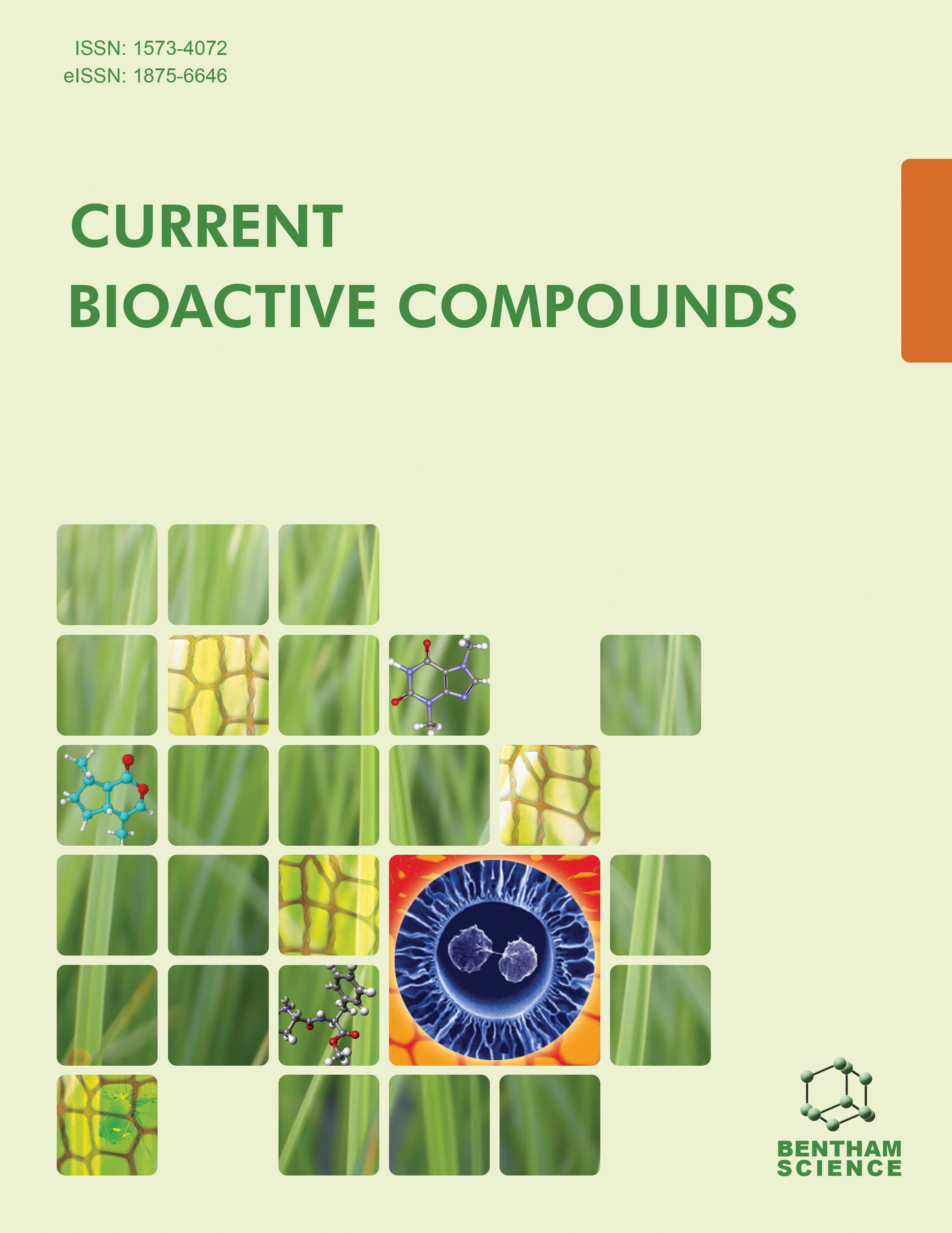- Home
- A-Z Publications
- Current Bioactive Compounds
- Previous Issues
- Volume 6, Issue 3, 2010
Current Bioactive Compounds - Volume 6, Issue 3, 2010
Volume 6, Issue 3, 2010
-
-
Development of Vesicular Acetylcholine Transporter Ligands: Molecular Probes for Alzheimer's Disease
More LessAuthors: Nicolas Giboureau, Kylee M. Aumann, Corinne Beinat and Michael KassiouThe Vesicular Acetylcholine Transporter (VAChT) is found throughout the cholinergic nervous system and is responsible for transporting Acetylcholine (ACh) into synaptic vesicles for storage. Deterioration of cholinergic neurotransmission is a known pathophysiological hallmark of Alzheimer's disease (AD). Ligands that bind to VAChT - particularly in the brain and CNS where cholinergic neurotransmission is vital for Read More
-
-
-
Curcumin and Immunity
More LessAuthors: Antonio La Cava and Milan FialaSeveral investigations have unveiled multiple effects of the ployphenol curcumin on immune responses, both in physiological and in pathological conditions. Here we review the biochemistry of this compound in the context of its potential and limitations as possible therapeutic modulator of immune responses.
-
-
-
The Potential of Ellagic Acid as a Possible Antimalarial Drug Candidate
More LessBy Jean FotieEllagic acid is a polyphenol antioxidant found in numerous fruits and vegetables including raspberries, strawberries, cranberries, walnuts, pecans, pomegranates and other plant foods. The antiproliferative and antioxidant properties of ellagic acid have spurred several researches into the potential health benefits of its consumption, leading to its marketing as a dietary supplement. Recently, ellagic acid was shown to display Read More
-
-
-
Scalarane Sesterterpenoids
More LessIn this review we cover the names, structures, and occurrence of all the scalaranes since their discovery in 1972. We have given special attention to the biological properties of these polycyclic terpenoids of exclusive marine origin.
-
Volumes & issues
-
Volume 21 (2025)
-
Volume 20 (2024)
-
Volume 19 (2023)
-
Volume 18 (2022)
-
Volume 17 (2021)
-
Volume 16 (2020)
-
Volume 15 (2019)
-
Volume 14 (2018)
-
Volume 13 (2017)
-
Volume 12 (2016)
-
Volume 11 (2015)
-
Volume 10 (2014)
-
Volume 9 (2013)
-
Volume 8 (2012)
-
Volume 7 (2011)
-
Volume 6 (2010)
-
Volume 5 (2009)
-
Volume 4 (2008)
-
Volume 3 (2007)
-
Volume 2 (2006)
-
Volume 1 (2005)
Most Read This Month
Article
content/journals/cbc
Journal
10
5
false
en

Most Cited Most Cited RSS feed
-
-
Podophyllotoxin: Current Perspectives
Authors: Ying Qian Liu, Liu Yang and Xuan Tian
-
- More Less

